Jon McCormack
Mixer Metaphors: audio interfaces for non-musical applications
Apr 16, 2025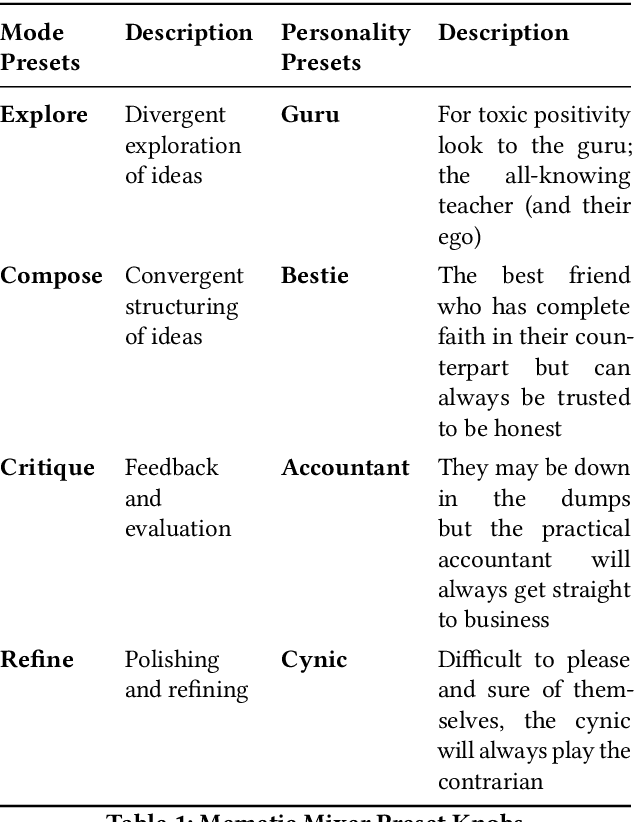

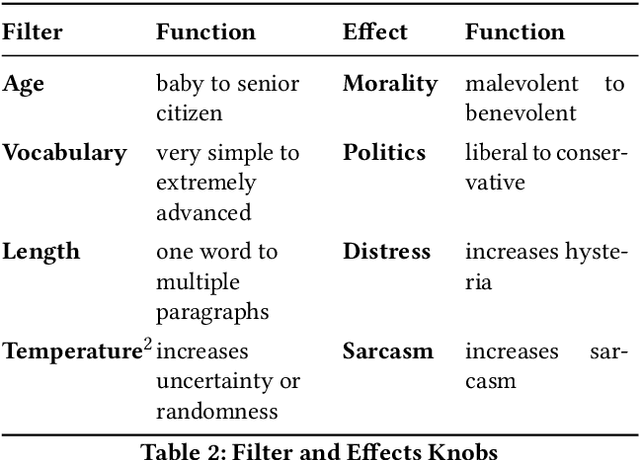

Abstract:The NIME conference traditionally focuses on interfaces for music and musical expression. In this paper we reverse this tradition to ask, can interfaces developed for music be successfully appropriated to non-musical applications? To help answer this question we designed and developed a new device, which uses interface metaphors borrowed from analogue synthesisers and audio mixing to physically control the intangible aspects of a Large Language Model. We compared two versions of the device, with and without the audio-inspired augmentations, with a group of artists who used each version over a one week period. Our results show that the use of audio-like controls afforded more immediate, direct and embodied control over the LLM, allowing users to creatively experiment and play with the device over its non-mixer counterpart. Our project demonstrates how cross-sensory metaphors can support creative thinking and embodied practice when designing new technological interfaces.
Transhuman Ansambl - Voice Beyond Language
May 06, 2024
Abstract:In this paper we present the design and development of the Transhuman Ansambl, a novel interactive singing-voice interface which senses its environment and responds to vocal input with vocalisations using human voice. Designed for live performance with a human performer and as a standalone sound installation, the ansambl consists of sixteen bespoke virtual singers arranged in a circle. When performing live, the virtual singers listen to the human performer and respond to their singing by reading pitch, intonation and volume cues. In a standalone sound installation mode, singers use ultrasonic distance sensors to sense audience presence. Developed as part of the 1st author's practice-based PhD and artistic practice as a live performer, this work employs the singing-voice to explore voice interactions in HCI beyond language, and innovative ways of live performing. How is technology supporting the effect of intimacy produced through voice? Does the act of surrounding the audience with responsive virtual singers challenge the traditional roles of performer-listener? To answer these questions, we draw upon the 1st author's experience with the system, and the interdisciplinary field of voice studies that consider the voice as the sound medium independent of language, capable of enacting a reciprocal connection between bodies.
Holon: a cybernetic interface for bio-semiotics
Apr 05, 2024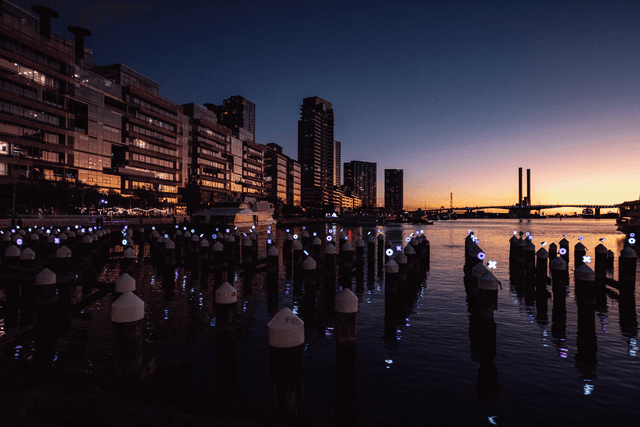
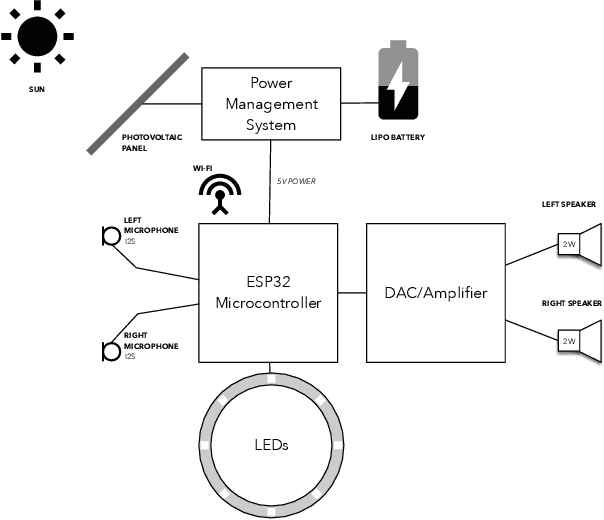
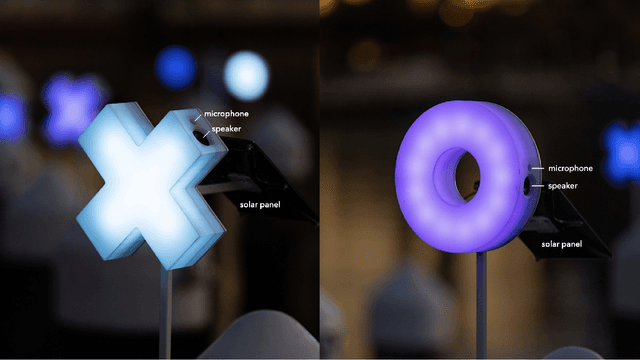

Abstract:This paper presents an interactive artwork, "Holon", a collection of 130 autonomous, cybernetic organisms that listen and make sound in collaboration with the natural environment. The work was developed for installation on water at a heritage-listed dock in Melbourne, Australia. Conceptual issues informing the work are presented, along with a detailed technical overview of the implementation. Individual holons are of three types, inspired by biological models of animal communication: composer/generators, collector/critics and disruptors. Collectively, Holon integrates and occupies elements of the acoustic spectrum in collaboration with human and non-human agents.
No Longer Trending on Artstation: Prompt Analysis of Generative AI Art
Jan 24, 2024
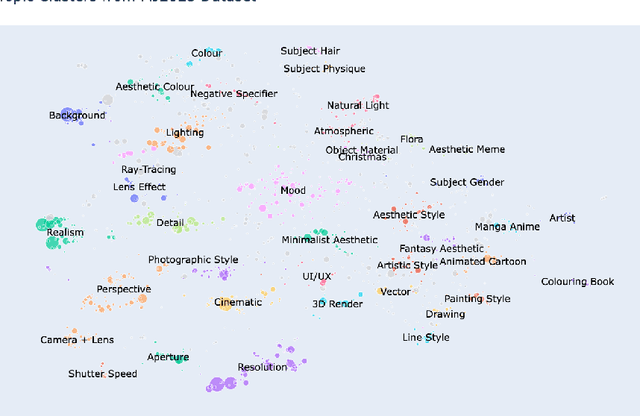

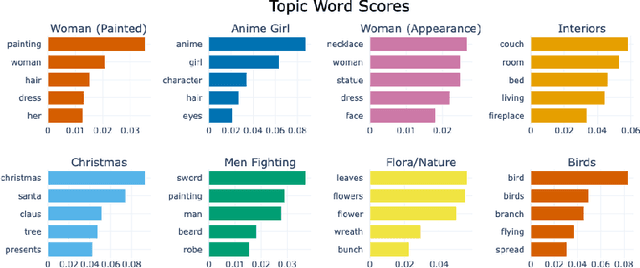
Abstract:Image generation using generative AI is rapidly becoming a major new source of visual media, with billions of AI generated images created using diffusion models such as Stable Diffusion and Midjourney over the last few years. In this paper we collect and analyse over 3 million prompts and the images they generate. Using natural language processing, topic analysis and visualisation methods we aim to understand collectively how people are using text prompts, the impact of these systems on artists, and more broadly on the visual cultures they promote. Our study shows that prompting focuses largely on surface aesthetics, reinforcing cultural norms, popular conventional representations and imagery. We also find that many users focus on popular topics (such as making colouring books, fantasy art, or Christmas cards), suggesting that the dominant use for the systems analysed is recreational rather than artistic.
Creative Discovery using QD Search
May 08, 2023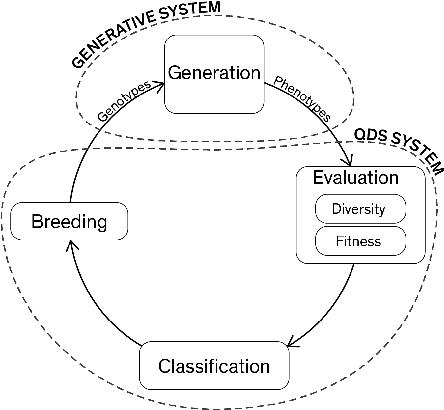

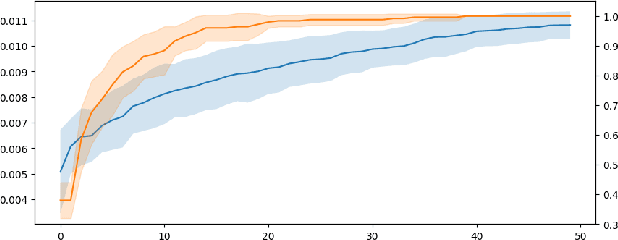
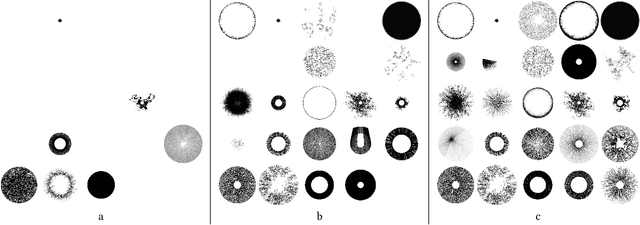
Abstract:In creative design, where aesthetics play a crucial role in determining the quality of outcomes, there are often multiple worthwhile possibilities, rather than a single ``best'' design. This challenge is compounded in the use of computational generative systems, where the sheer number of potential outcomes can be overwhelming. This paper introduces a method that combines evolutionary optimisation with AI-based image classification to perform quality-diversity search, allowing for the creative exploration of complex design spaces. The process begins by randomly sampling the genotype space, followed by mapping the generated phenotypes to a reduced representation of the solution space, as well as evaluating them based on their visual characteristics. This results in an elite group of diverse outcomes that span the solution space. The elite is then progressively updated via sampling and simple mutation. We tested our method on a generative system that produces abstract drawings. The results demonstrate that the system can effectively evolve populations of phenotypes with high aesthetic value and greater visual diversity compared to traditional optimisation-focused evolutionary approaches.
Is Writing Prompts Really Making Art?
Feb 02, 2023



Abstract:In recent years Generative Machine Learning systems have advanced significantly. A current wave of generative systems use text prompts to create complex imagery, video, even 3D datasets. The creators of these systems claim a revolution in bringing creativity and art to anyone who can type a prompt. In this position paper, we question the basis for these claims, dividing our analysis into three areas: the limitations of linguistic descriptions, implications of the dataset, and lastly, matters of materiality and embodiment. We conclude with an analysis of the creative possibilities enabled by prompt-based systems, asking if they can be considered a new artistic medium.
Message Ritual: A Posthuman Account of Living with Lamp
Jan 26, 2023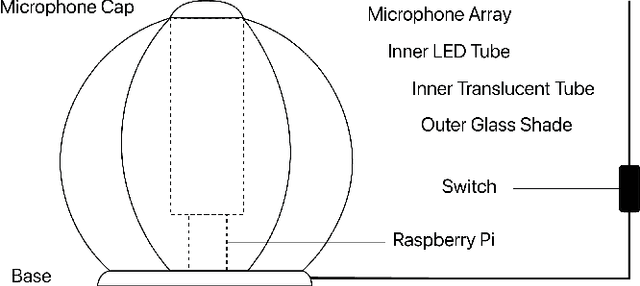


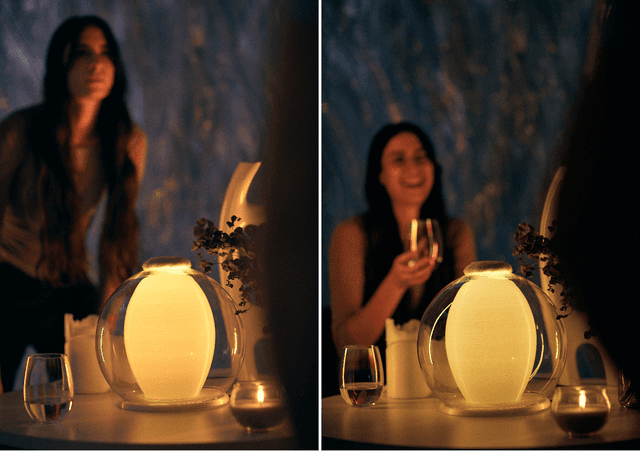
Abstract:As we become increasingly entangled with digital technologies, the boundary between human and machine is progressively blurring. Adopting a performative, posthumanist perspective resolves this ambiguity by proposing that such boundaries are not predetermined, rather they are enacted within a certain material configuration. Using this approach, dubbed `Entanglement HCI', this paper presents \emph{Message Ritual} -- a novel, integrated AI system that encourages the re-framing of memory through machine generated poetics. Embodied within a domestic table lamp, the system listens in on conversations occurring within the home, drawing out key topics and phrases of the day and reconstituting them through machine generated poetry, delivered to household members via SMS upon waking each morning. Participants across four households were asked to live with the lamp over a two week period. We present a diffractive analysis exploring how the lamp \emph{becomes with} participants and discuss the implications of this method for future HCI research.
Explainable Computational Creativity
May 11, 2022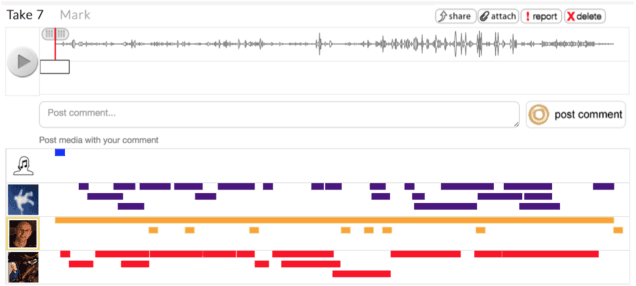
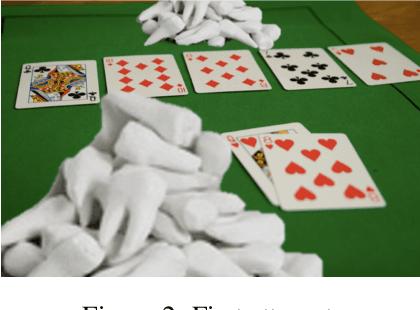
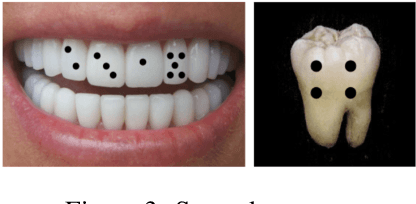
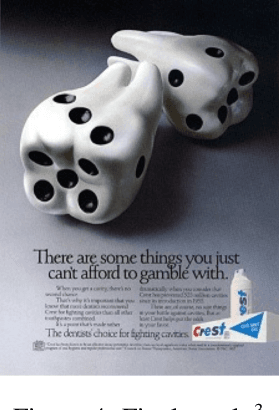
Abstract:Human collaboration with systems within the Computational Creativity (CC) field is often restricted to shallow interactions, where the creative processes, of systems and humans alike, are carried out in isolation, without any (or little) intervention from the user, and without any discussion about how the unfolding decisions are taking place. Fruitful co-creation requires a sustained ongoing interaction that can include discussions of ideas, comparisons to previous/other works, incremental improvements and revisions, etc. For these interactions, communication is an intrinsic factor. This means giving a voice to CC systems and enabling two-way communication channels between them and their users so that they can: explain their processes and decisions, support their ideas so that these are given serious consideration by their creative collaborators, and learn from these discussions to further improve their creative processes. For this, we propose a set of design principles for CC systems that aim at supporting greater co-creation and collaboration with their human collaborators.
Quality-diversity for aesthetic evolution
Feb 04, 2022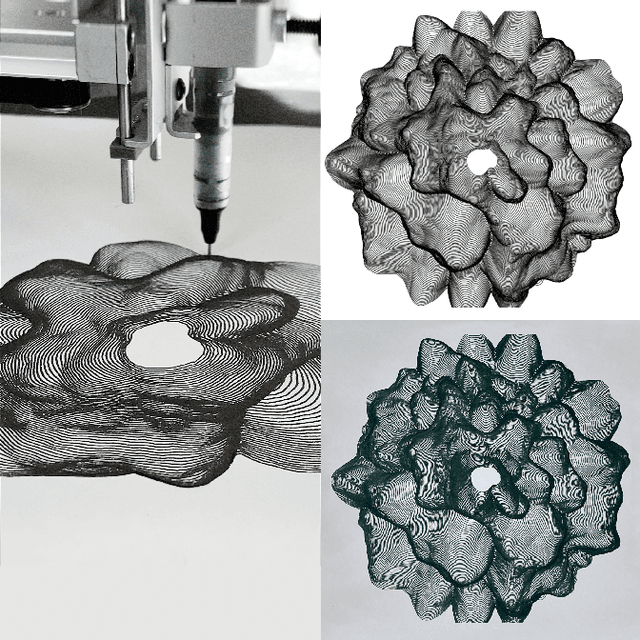
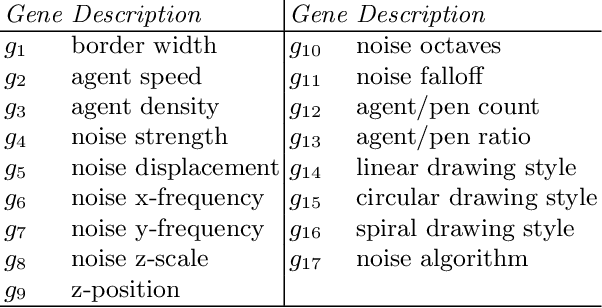

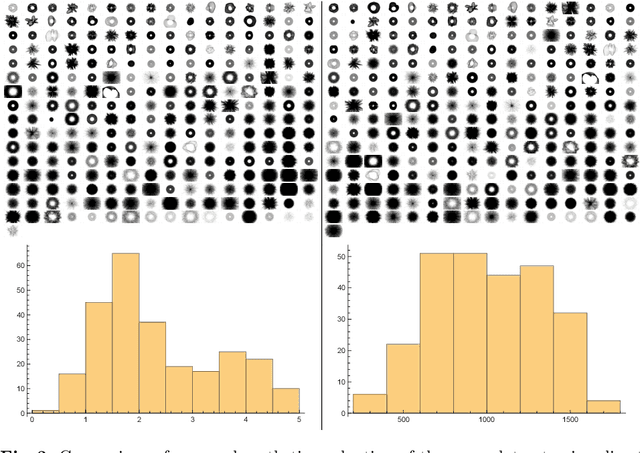
Abstract:Many creative generative design spaces contain multiple regions with individuals of high aesthetic value. Yet traditional evolutionary computing methods typically focus on optimisation, searching for the fittest individual in a population. In this paper we apply quality-diversity search methods to explore a creative generative system (an agent-based line drawing model). We perform a random sampling of genotype space and use individual artist-assigned evaluations of aesthetic quality to formulate a computable fitness measure specific to the artist and this system. To compute diversity we use a convolutional neural network to discriminate features that are dimensionally reduced into two dimensions. We show that the quality-diversity search is able to find multiple phenotypes of high aesthetic value. These phenotypes show greater diversity and quality than those the artist was able to find using manual search methods.
Complexity and Aesthetics in Generative and Evolutionary Art
Jan 05, 2022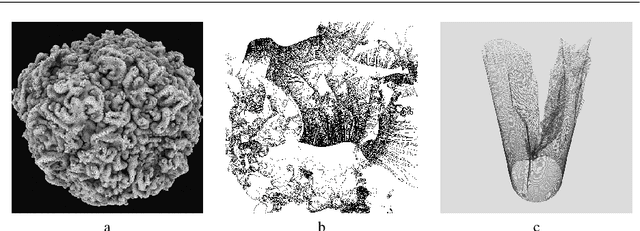
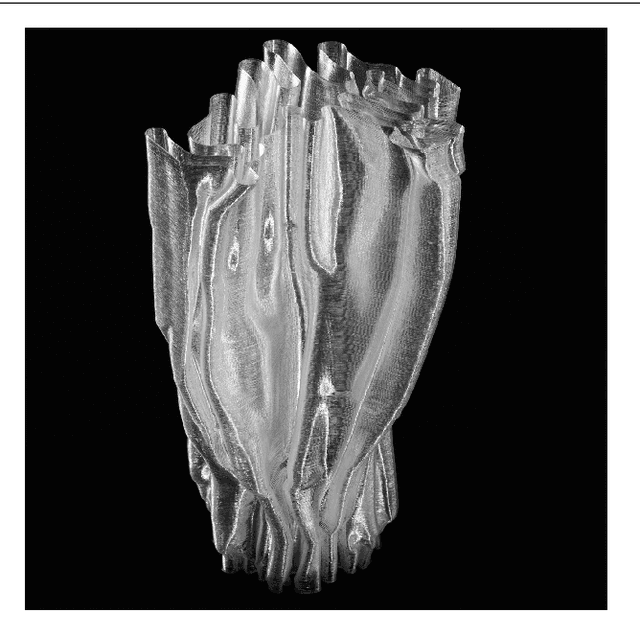

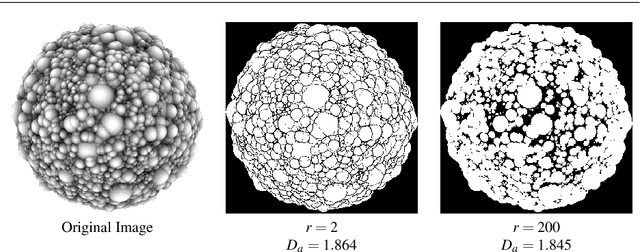
Abstract:In this paper we examine the concept of complexity as it applies to generative and evolutionary art and design. Complexity has many different, discipline specific definitions, such as complexity in physical systems (entropy), algorithmic measures of information complexity and the field of "complex systems". We apply a series of different complexity measures to three different evolutionary art datasets and look at the correlations between complexity and individual aesthetic judgement by the artist (in the case of two datasets) or the physically measured complexity of generative 3D forms. Our results show that the degree of correlation is different for each set and measure, indicating that there is no overall "better" measure. However, specific measures do perform well on individual datasets, indicating that careful choice can increase the value of using such measures. We then assess the value of complexity measures for the audience by undertaking a large-scale survey on the perception of complexity and aesthetics. We conclude by discussing the value of direct measures in generative and evolutionary art, reinforcing recent findings from neuroimaging and psychology which suggest human aesthetic judgement is informed by many extrinsic factors beyond the measurable properties of the object being judged.
 Add to Chrome
Add to Chrome Add to Firefox
Add to Firefox Add to Edge
Add to Edge